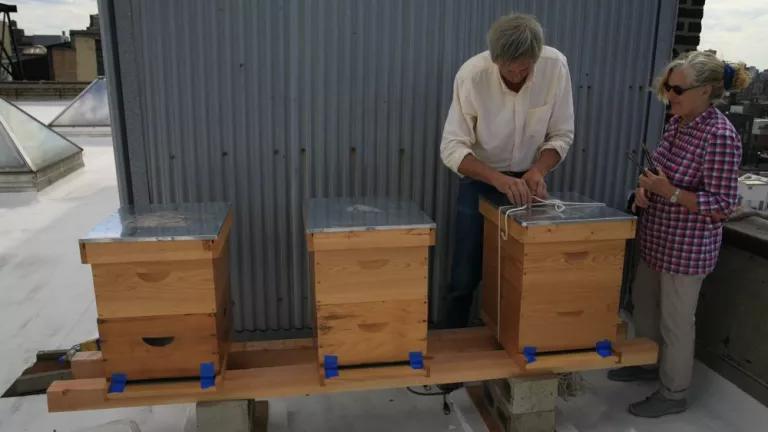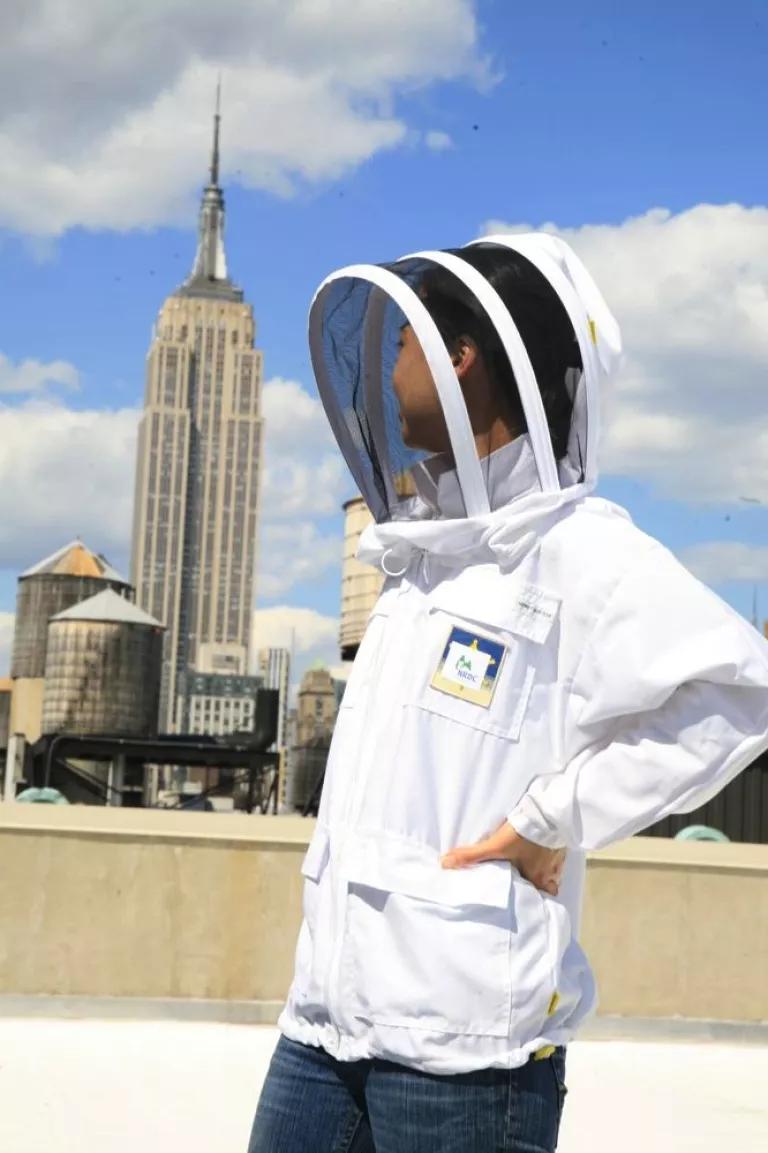
Last week, NRDC’s New York office welcomed its newest residents -- three hives of honeybees. As I type, the bees are buzzing merrily on the roof above my head, gathering pollen and nectar from the nearby parks and rooftop gardens.
New York City legalized beekeeping in April, and what better way to welcome this sweet beginning than by making a home for our pollinator friends on our very own rooftop? My sister Christine is a beekeeper in Westchester. Last Monday, she and her partner Charles Branch brought in three hives, each with a queen bee and thousands of diligent worker bees. The bees were screened into their hives and driven through the streets of Manhattan to our Chelsea office, where they were whisked up the freight elevator to their new home. When the hives were strapped in place and the mesh screens were pulled off, the bees began to explore their urban surroundings.
In recent years, bees have been threatened by a phenomenon called colony collapse disorder in which adult bees abandon their hives, leaving behind honey and bee larvae. Beekeepers have reported losses from 30% to 90% of their colonies. CCD has been reported all across the United States and in Europe. There are several potential factors behind pollinator decline, including pesticide exposure, habitat loss, nutritional deficiencies, and diseases and parasites. This decline in our bee populations has troubling implications, because the pollination of bees is responsible for every third bite of food that we eat -- $15 billion worth of agriculture in the United States.
NRDC has been fighting on several fronts to address pollinator decline. Our Litigation Team won an important victory last December, overturning registration of a potentially bee-toxic pesticide, spirotetramat. This chemical interferes with insects’ ability to reproduce, and studies showed that it has serious effects on the survival of adult bees and the development of their young (brood). The court ordered EPA to re-evaluate this pesticide and to provide the public with an opportunity to comment on the pesticide before re-approving it for use. Our Science Center has also been hard at work for bees, collecting data on the factors behind CCD and lobbying for increased research funding into the causes behind pollinator decline.
Keeping hives on our roof is a sweet complement to our bee advocacy work in courtrooms and on Capitol Hill. Inspired by her work on the pesticides case, NRDC legal fellow Vivian Wang took a winter course on urban beekeeping with the New York City Beekeepers Association. Once a week, she will trade in her business suit for a bee suit to help tend to our rooftop hives.

With some luck (and thanks to the bees’ industrious nature), NRDC may have its first honey harvest in a couple of months. In the meantime, these honeybees will pollinate the plants in our parks and gardens, contributing to a greener New York City.